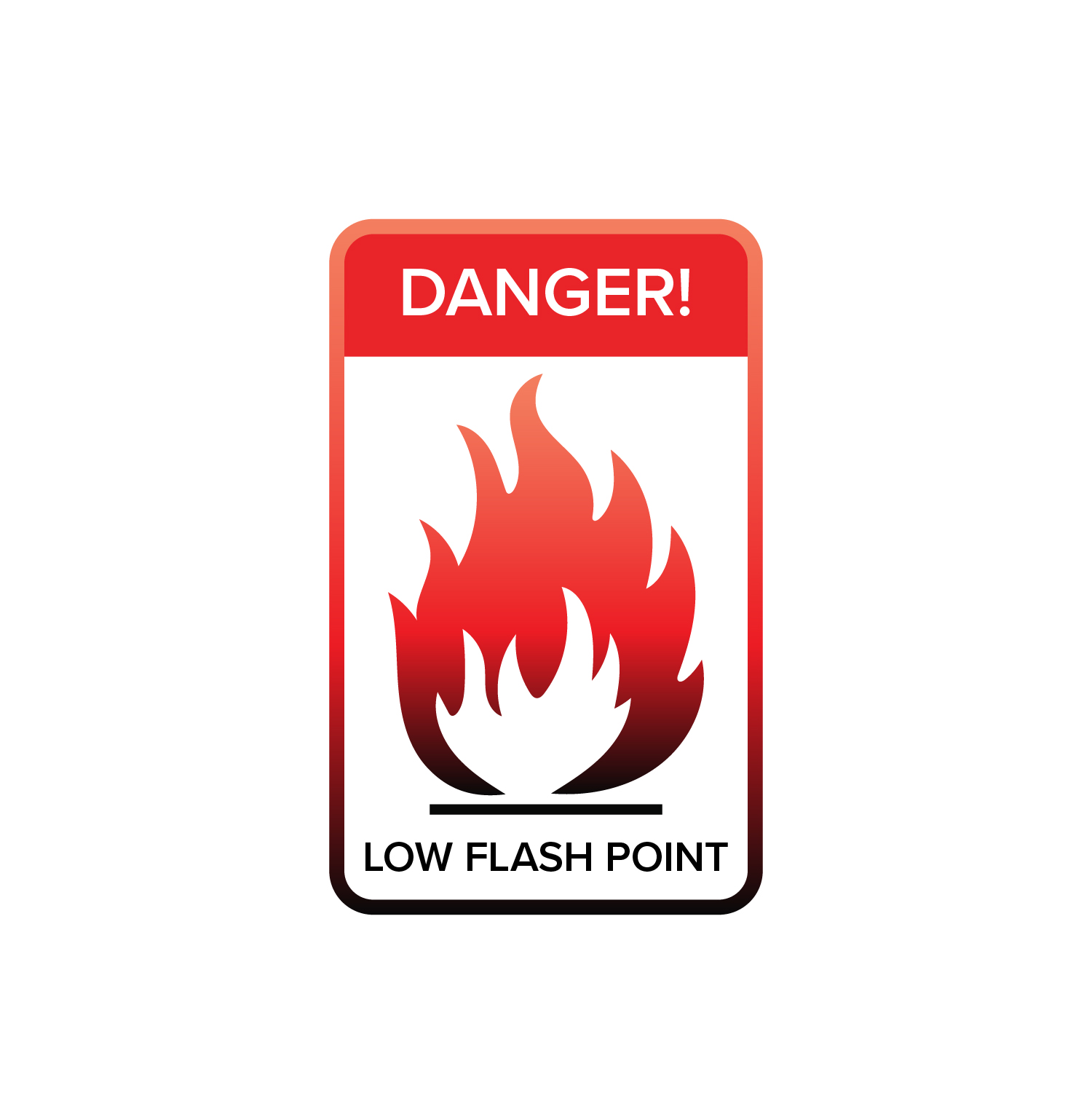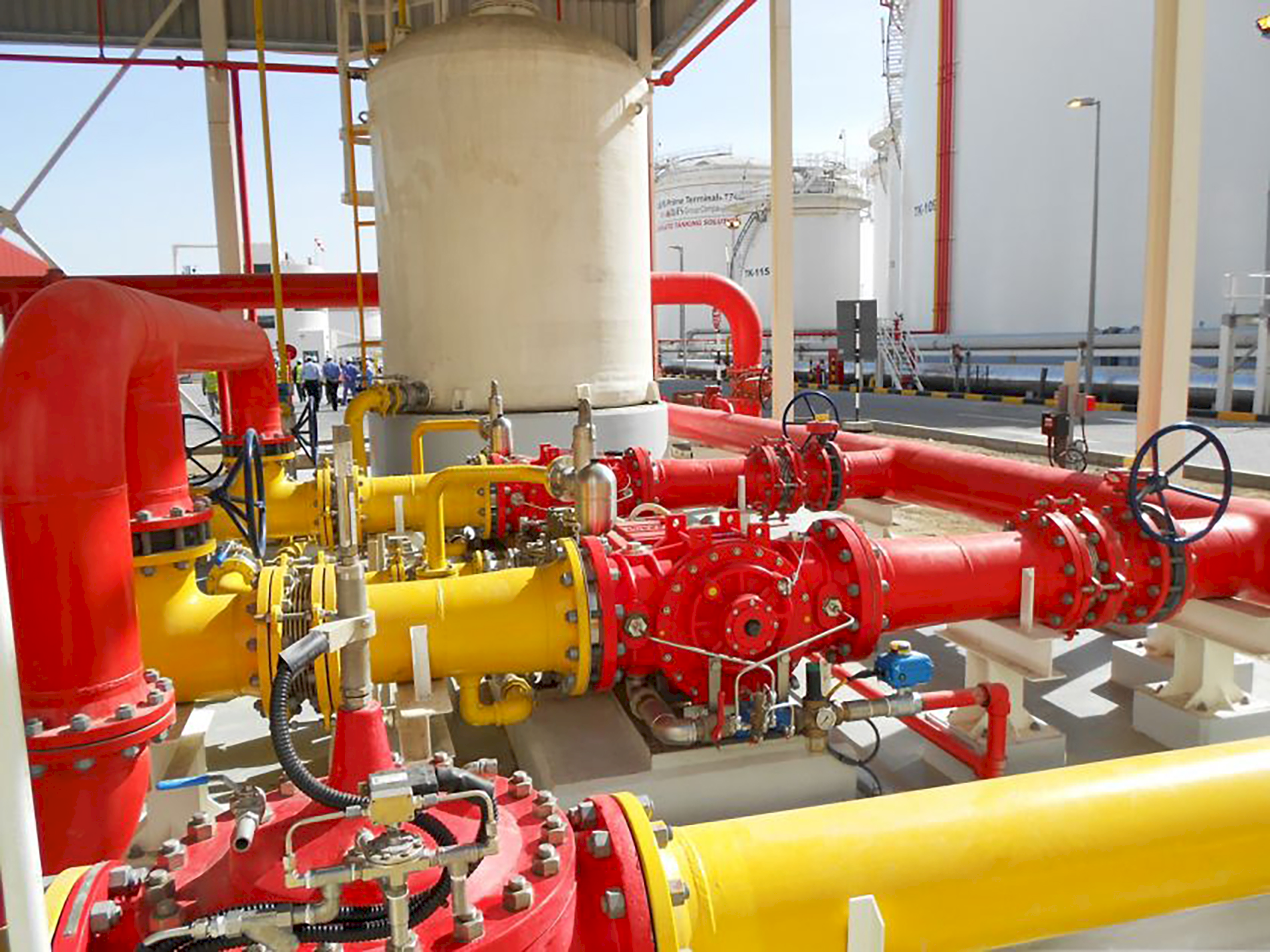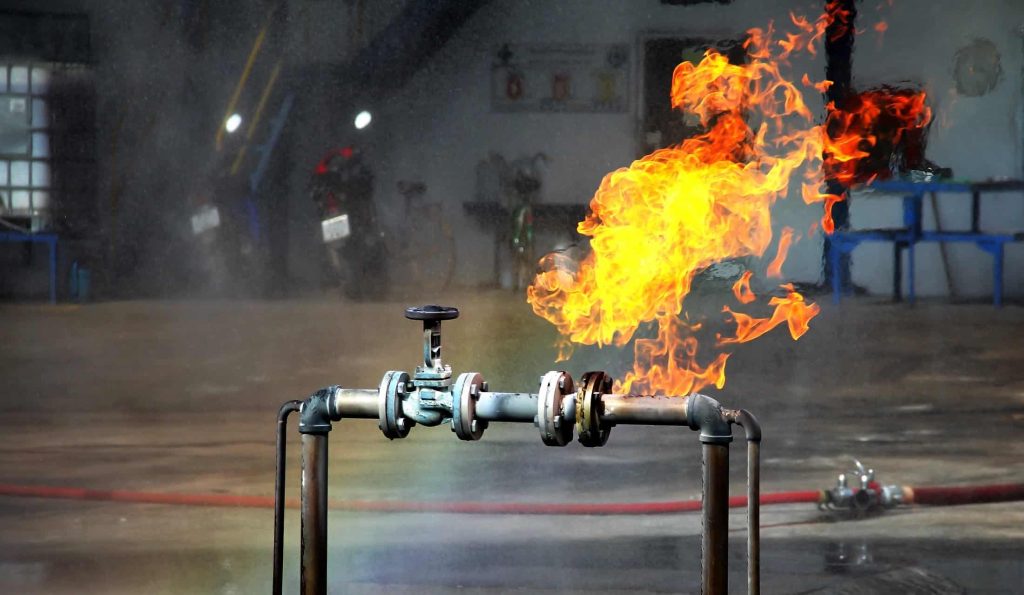One of the biggest causes of loss of life and property damage in industries is fire. The high volume and frequency of use of flammable liquids and gases used all over the world shows that the risk of industrial accidents due to the ignition of these materials is very high. For this reason, it is very important to know the characteristics of these materials in the fire alarm and extinguishing industry. Therefore, in this study, from Ganjineh Pavan‘s articles, we will examine flash point or ignition point and its similar terms such as fire point and Autoignition temperature.
The need to know the characteristics of flammable materials
Familiarity with the characteristics of flammable materials is very important in choosing and implementing a fire alarm system, fire extinguishing system, and flame and gas monitoring system (F&G system) in various industries. On the other hand, knowing these features is also necessary for the professionals of these industries.
In many industrial applications, fuel is used to obtain thermal energy through fuel combustion. The choice of fuel in these industries is also one of the most important issues. Fuel should be used and selected based on its properties such as calorific value, density, viscosity, specific heat and ignition point, fire point and ignition temperature. But, what is meant by flash point, fire point and ignition temperature and what is the difference between them? In the rest of this article, we will answer these questions from Ganjineh Pavan’s articles.

Different methods and terms are used to measure the flammability and combustion of a material.
Three of these terms are flash point, fire point, and autoignition temperature. Although they have similarities, they are completely different terms.
Flash point is the lowest temperature at which a liquid can generate heat to form a flammable mixture in the air near the surface of the liquid.
In other words, the flash point of a flammable liquid is the lowest temperature at which the vapors of that liquid ignite near the ignition source.
The lower the flash point, the easier it is for the material to ignite. For example, gasoline has a flash point of approximately -40 °C (-40 °F) and is more flammable than ethylene glycol (antifreeze), which has a flash point of 111 °C (232 °F).
Flash point of common items
Knowing the flash point of various items can help when planning for workplace safety and the proper use of fire alarm and extinguishing equipment. The following are some of the most common types of fuel or other materials where flash point is important.
Gasoline: -40 °C
Ethanol (70%): 21 °C
Diesel fuel: 52.2 °C
Jet fuel: 37.8 °C
Vegetable oil: 327.2 °C

Fire point and its difference with flash point
A term close to flash point and less common is fire point.
Fire point is the temperature at or above which a flammable liquid produces sufficient vapor to ignite by a spark or flame and burn for at least five seconds.
The fire point or fire point of a substance is different from the ignition point because the temperature of the ignition zone or flash point is lower and it ignites for a short time, but cannot sustain the fire.
At the flash point, the ignition is immediately extinguished by removing the flame or external ignition source. While in fire point, combustion continues for at least 5 seconds after removing the flame. Flash point is usually between 8 and 10 percent less than fire point.
Auto-ignition temperature and its difference with flash point
Flash point and fire point should not be confused with the autoignition temperature of a liquid, the temperature at which the liquid ignites spontaneously without any external source of ignition such as a flame or spark.
Unlike flash point or fire point, autoignition temperature does not need an ignition source.
In other words, Autoignition Temperature is the lowest temperature at which a volatile substance turns into a gas that ignites without the help of a flame or an external ignition source.
The auto-ignition temperature is usually much higher than the flash point. For example, the ignition point of gasoline is about -43 degrees Celsius and its auto-ignition temperature is about 280 degrees Celsius.

Flash point measurement method
As we said, the flash point or ignition point is the lowest temperature at which its vapors can ignite by introducing an external source of fire. There are two main methods of measuring flash point: open cup and closed cup.
Open cup test method
The open cup flash point test is where the substance is placed in a container that is open to the outside atmosphere.
Then its temperature gradually increases and an ignition source passes over it at intervals. When a substance sparks or ignites, it has reached its flash point.
Closed cup test method
The closed cup flash point test is performed inside a sealed container and the ignition source is introduced into the container.
As a result, the material is not exposed to elements outside the container, which can have an interfering effect on test results. Reduced interference leads to lower flash points, as heat is trapped inside.
Because the flash point obtained in the closed cup test is lower, therefore, it is safer for widespread use and thus generally accepted.
The importance of flash point, fire point and Autoignition temperature in industries
By knowing the temperature at which a liquid or fuel catches fire, they can be stored and transported accordingly.
That is why, knowing the ignition point and fire point of gasoline and diesel, every gas station prefers to store gasoline and diesel underground so that it is at a lower temperature and the possibility of accidents such as fire and explosion is reduced.
Therefore, flash points and fire points and self-ignition temperature help to determine the nature of flammability of various industrial chemicals and fuels.
A lower flash point value means the fuel is highly flammable, potentially raising the possibility of a fire.

Final word
The ignition characteristics of chemical liquids and liquid fuels, which are widely used in various industries, play an important role in choosing the type of fire alarm system and related fire alarm and extinguishing equipment.
For this reason, knowing terms such as flash point, fire point, and auto-ignition temperature is very important for professionals in related industries and especially firefighting industry activists.
Ganjineh Pavan company is ready to provide advice for the design, implementation and installation of fire alarms and extinguishing systems, relying on the extensive experience and knowledge of its experts in this field.
So, to increase the safety of your work environment, contact the experts of Ganijneh Pavan now.







